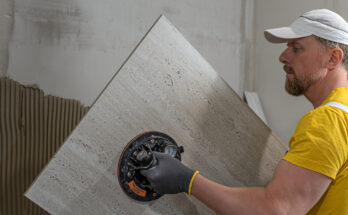How Long Your Home’s Windows Will Last (And Signs They Need To Be Replaced)
Inspecting the nooks and crannies is a great way to begin structuring your home renovation project. However, while you remain focused on common problematic areas, like roofs, don’t overlook your old windows. Worn out ones will hamper your property’s aesthetic appeal and negatively impact your energy bills. House Digest spoke exclusively with Kate Land, the vice president of product and innovation at Cornerstone Building Brands, to find out how long your home’s windows will last and signs they need to be replaced. Outlining the key indicators, she recommended replacing them when “there are drafts and leaks around windows.” Keep an eye out for “declining interior comfort, which can lead to higher heating and cooling costs.”
Additionally, it’s time to bid your old portals goodbye when “windows have broken glass or damaged frames,” or they no longer operate as they should. “Permanent fogging between glass panes in dual-pane windows” is another key sign you shouldn’t ignore. The good news is windows last a while and you won’t have to keep changing them every few years. That being said, their actual lifespan will depend on the material you choose, as well as maintenance. “Premium vinyl windows can have a lifespan of up to 30 years. Vinyl has UV stabilizers, but windows in warmer climates with higher solar exposure have a slightly reduced life span,” said Land. “Wood and Aluminum windows usually last 15-30 years requiring more maintenance to extend their lifespan. Fiberglass can last 30+ years depending on their finish.”
What are the main benefits of replacing old windows in a home?
The cost to replace a window is high and you can expect to shell out anywhere from $3,445 to $11,834. Although your pocket will feel the pinch, there are a few benefits of retiring your old windows (boosting your home’s curb appeal being the primary advantage). Speaking exclusively with House Digest, Land iterated, “Over time, existing windows can fade or suffer exterior damage. New windows are built with durable frames and reliable hardware, ensuring long-term functionality. Beyond performance, new windows will also provide a refreshed and polished appearance both inside and out.” Plus, there are a wide range of options available, including “exterior colors and grille patterns, to significantly boost curb appeal.”
Besides, you can actively reduce your energy costs at home since heat gain and loss accounts for 25% to 30% of consumption. “Today’s windows also offer higher thermal and overall performance, especially when tailored to your home’s location and weather conditions,” Land explained. “In addition, features like window tints and screens can manage thermal build-up from the sun in specific home areas.” Just imagine your rooms not turning into a sauna during the hot summer months. You also get to save money on electricity bills. “Replacing outdated, inefficient models that may leak air or water with modern alternatives can improve energy efficiency and lower utility bills — there’s even the potential of a tax credit up to $1,100 if you choose ENERGY STAR® Most Efficient windows and doors,” Land added. You can claim this for windows purchased from January 1, 2023 to December 31, 2032.
Tips to maintain your shiny new windows
Simply replacing your old windows with new, shiny ones isn’t enough. You must take good care of them to elongate their lifespan and keep them looking great. In her exclusive chat with House Digest, Land mentioned an easy cleaning tip. “Care and maintenance guidance can differ depending on the type of window, however, vinyl replacement windows are low-maintenance and easy to care for,” she said. “Simply clean them using a cloth, water and a mild detergent. Wipe the exterior of the glass horizontally and the interior vertically to easily spot any streaks.”
For the other types, dust them whenever they look dull and give their exterior and interior a soapy bath every six months. “Regular cleaning will remove any mold growth and allow you to catch minor repairs early,” concluded Land. While at it, don’t forget to check their tracks for dust and debris accumulation. Dip a Q-tip in distilled white vinegar every quarter and run it along their length to ensure you open and close your windows without any trouble. In case the tracks are clean but you’re still facing some issues, lubricate them. It’s also a good idea to apply a little lubrication to your hinges and locks to keep them functioning smoothly. Plug all minor holes with caulk and check the weatherstripping regularly. This will keep your energy bills low and prevent moisture, mildew, and mold from seeping through and setting up shop.



